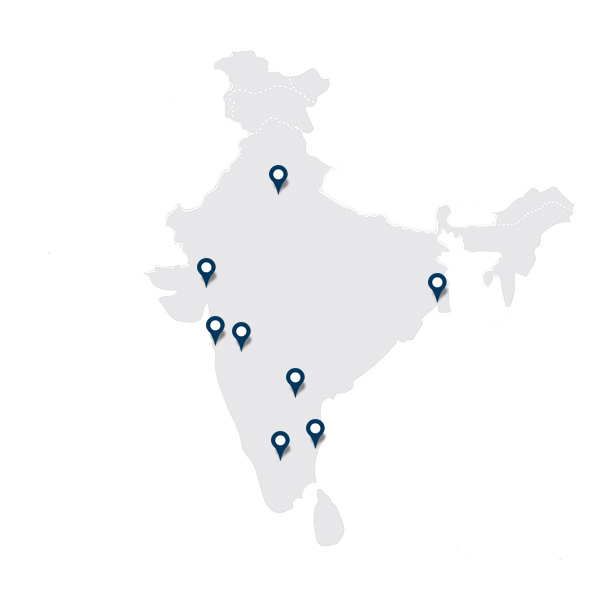Introduction
Dreaming of studying abroad is easy—the real work begins when it’s time to finance that dream. With tuition fees soaring, living expenses adding up and currency exchange rates rarely in our favour, funding international education can feel like navigating a labyrinth. For many students and families, savings and scholarships aren’t enough. That’s where education loans step in—not as a burden, but as a bridge to global academic opportunities.
Understanding how to get an education loan for abroad studies is not just about filling out forms or comparing interest rates. It’s about making informed financial decisions that shape your future. From deciphering loan terms and eligibility criteria to knowing which banks or NBFCs to approach and how to negotiate better terms, the process involves more than a quick Google search.
Many students hesitate at the mention of loans, unsure of where to begin or afraid of long-term commitments. But when planned right, an education loan is not a setback—it’s a smart step forward. In this blog, we unpack the entire journey, helping you understand not only where to look but also what to look for, ensuring your loan is a launchpad, not a limitation.
Understanding Education Loans
What Is an Education Loan?
How Do Education Loans Work?
Key Features of Education Loans
When exploring how to get an education loan for abroad studies, learning about the features of these loans can help students and parents make well-informed financial choices. Education loans are not one-size-fits-all—they vary by lender, loan type, course and destination country. Here are the most crucial elements to look into:
1. Loan Amount Coverage
The sanctioned loan amount largely depends on the student’s academic profile, the reputation of the university, the course selected and the financial standing of the co-applicant. Public sector banks offer loans up to ₹1.5 crore under schemes, while private lenders may offer even more based on collateral strength. In general, loans typically cover:
- Tuition fees
- Living expenses
- Travel and visa costs
- Health insurance
- Books, laptops and other study materials
- Examination or lab fees, if applicable
2. Interest Rates
Interest rates on education loans for abroad studies vary significantly:
- Public banks: Offer relatively lower interest rates, usually starting at 9–10% for secured loans.
- Private banks and NBFCs: Charge slightly higher interest (ranging from 11% to 14%) but may offer more flexibility in terms of collateral-free options. Interest is typically calculated using a floating rate, linked to external benchmarks like the RBI repo rate, which can fluctuate over the tenure.
3. Collateral Requirements
Whether you’ll need to pledge collateral depends on:
- The loan amount: Loans under ₹7.5 lakh usually don’t require collateral, provided other eligibility criteria are met.
- The lender: NBFCs often offer loans without collateral even for higher amounts, provided the student gets admission to top-tier universities.
- The co-applicant’s financial profile: A substantial income and credit history can sometimes offset the need for collateral.
Types of acceptable collateral include:
- Residential or commercial property
- Fixed deposits
- Life insurance policies (in some cases)
4. Repayment Structure
Repayment usually begins after the moratorium period, which includes the course duration plus 6–12 months. Borrowers can choose to:
- Start paying simple interest during the course period to reduce the overall burden
- Opt for full EMI payments after graduation
The tenure can range from 5 to 15 years, depending on the amount borrowed and the lender’s policy.
5. Processing Time and Fees
Processing timelines vary from 7 days to 4 weeks, depending on whether the loan is with or without collateral. Processing fees typically range from 0.5% to 2% of the loan amount. Some banks waive this fee for premier institutions or under special schemes.
6. Tax Benefits
Under Section 80E of the Income Tax Act, borrowers can claim a deduction on the interest paid on the loan for up to 8 years, with no upper cap on the amount. This benefit is available only for individual taxpayers and not for companies or trusts.
Benefits of Opting for an Education Loan
Choosing to finance your international education through a loan isn’t merely a fallback option—it can be a smart, structured way to manage expenses without draining family savings. Understanding how to get an education loan for abroad studies includes recognising its broader advantages, not just in the immediate term but for your financial future too.
1.Preserves Personal and Family Savings
One of the most immediate advantages is that an education loan allows you to preserve long-term savings or fixed assets. Rather than liquidating mutual funds, breaking fixed deposits, or selling property, families can retain their financial cushions. This is especially helpful in uncertain economic climates, where holding on to emergency funds can make all the difference.
2. Access to Quality Education Without Financial Strain
International degrees—especially from countries like the UK, US, Canada, or Australia—can easily cost ₹30–80 lakh or more. With a well-structured loan, students gain access to world-class universities and programmes that may otherwise be out of financial reach. The loan spreads out this high expense over several years, softening the immediate financial impact.
3. Flexible Repayment Structures
Most education loans come with a moratorium period (course duration + 6–12 months), giving students breathing room to settle into a job before repayment kicks in. This buffer period is crucial for students studying abroad, as it takes time to find suitable employment post-graduation.
Further, repayment tenures can stretch up to 15 years, making monthly EMIs more manageable. Many lenders also allow partial prepayments or early closures without penalty, offering flexibility if your financial situation improves.
4. Collateral-Free Options for Meritorious Students
Several NBFCs and private lenders offer collateral-free education loans for students admitted to prestigious institutions abroad. For students without tangible assets to pledge, this opens up access to funding that would otherwise be out of reach through traditional banks.
Even public banks sometimes waive collateral if the student gets into top-ranking institutes, or if the co-applicant shows a strong repayment capability.
5. Tax Benefits Under Section 80E
Repaying an education loan doesn’t just help your credit score—it can ease your tax burden too. Under Section 80E of the Income Tax Act, the entire interest paid on an education loan can be claimed as a deduction for up to 8 financial years. There’s no cap on the amount, making this one of the most generous tax incentives for borrowers in India.
This deduction is available to the borrower or the co-applicant, making it especially useful for working parents supporting their child’s education.
6. Builds Financial Discipline and Credit History
Successfully managing an education loan can be a stepping stone to building your financial credibility. Timely repayments contribute to a healthy credit score, which becomes a significant asset when applying for future loans—whether it’s a car loan, home mortgage or even a business loan.
This is an early opportunity to develop responsible borrowing habits for students just entering the financial ecosystem.
7. Encourages Independent Financial Planning
When students take a loan to fund their education, it often instils a sense of accountability. Knowing there’s a financial commitment tied to their academic investment pushes many to take their education—and subsequent career—more seriously. It’s a soft lesson in financial responsibility, with real-world impact.
Eligibility Criteria for Education Loans
- Nationality: The applicant must be an Indian citizen
- Age: Applicants should be between 18 and 35 years old
- Academic Record: A consistent academic performance is often required
- Admission Confirmation: Securing admission to a recognised foreign institution is mandatory
- Co-Applicant: A co-applicant, such as a parent or guardian with a stable income source, is typically required
Understanding how to get an education loan for abroad studies involves a thorough assessment of these factors. By familiarising oneself with the workings, features, benefits and eligibility criteria of education loans, students can make informed decisions to support their international academic aspirations.
Types of Education Loans
When considering how to get an education loan for abroad studies, one of the first things to understand is the distinction between secured and unsecured loans. These categories determine everything from eligibility and documentation to interest rates and repayment flexibility.
1. Secured Education Loans (With Collateral)
Secured loans require the borrower to pledge collateral—typically residential property, fixed deposits or life insurance policies. Public sector banks mainly offer these loans.
Why consider secured loans?
They come with lower interest rates, longer repayment tenures and higher loan amounts—often up to ₹1.5 crore or more.
However, the approval process can be document-heavy and time-consuming, especially when property verification is involved.
2. Unsecured Education Loans (Without Collateral)
Unsecured loans don’t require any pledged assets, making them ideal for students who lack tangible collateral. These are offered by private banks and NBFCs.
They usually cover amounts up to ₹60–75 lakh, depending on the course and institution. Though convenient, they often come with slightly higher interest rates and may require a strong co-applicant profile.
| Feature | Secured Loan | Unsecured Loan |
|---|---|---|
| Collateral Required | Yes (Property, FD, etc.) | No |
| Loan Amount | Up to ₹1.5 crore or more | Up to ₹75 lakh |
| Interest Rate (approx.) | 9% – 11% | 11% – 14.5% |
| Repayment Tenure | Up to 15 years | 10 – 12 years |
| Processing Time | 2 – 4 weeks | 1 – 2 weeks |
| Best For | High-value loans, top universities | Students without collateral |
Choosing the right type of education loan depends on your financial profile, risk appetite and the institution you’re aiming for. Planning how to get an education loan for abroad studies isn’t about picking the quickest option—it is about finding a fit that supports your ambitions and financial well-being.
Eligibility and Documentation
Understanding how to get an education loan for abroad studies begins with knowing whether you’re eligible and what paperwork you’ll need. Lenders—whether public banks, private institutions or NBFCs—evaluate several factors before approving a student loan. The criteria ensure the borrower has both academic potential and financial backing.
Eligibility Criteria
To qualify for an education loan for overseas study, you must:
- Be an Indian citizen aged 18 to 35 years
- Have a confirmed admission offer from a recognised foreign university
- Pursue a graduate, postgraduate or professional course
- Demonstrate a strong academic record, especially in previous qualifying exams
The Role of Co-applicants
Since students don’t usually have an independent income, a co-applicant is mandatory. This is typically a parent, sibling or legal guardian with a stable financial background and healthy credit history. The co-applicant serves as the financial backbone of the loan, especially in unsecured cases.
Collateral Considerations
For loans above ₹7.5 lakh (depending on the lender), collateral may be required. Acceptable assets include residential property, fixed deposits or LIC policies. Substantial collateral can even reduce interest rates or increase approval chances for high-ticket loans.
Essential Documents
You’ll typically need:
- Admission letter from the university
- Academic transcripts
- ID and address proof
- Passport and visa (or proof of application)
- Bank statements and income proofs of the co-applicant
- Collateral documents (if applicable)
Financial institutions will also evaluate the chosen course’s employability factor, repayment capacity and the reputation of the institution abroad, making documentation accuracy all the more crucial.
Application Process
Once you’ve shortlisted a few lenders, understanding how to get an education loan for abroad studies becomes a matter of managing timelines, paperwork and accurate submissions. The process may look straightforward, but a clear step-by-step approach helps avoid unnecessary delays or rejections.
Step 1: Research and Pre-Assessment
Begin by shortlisting banks or NBFCs that offer education loans suited to your course, university and destination country. Check their eligibility terms, interest rates, collateral demands and repayment structures.
Step 2: Choose Between Online or In-Person Application
Most institutions offer online portals where students can:
- Fill out application forms
- Upload the required documents
- Track application status
For those preferring face-to-face interaction or applying for a secured loan, in-person visits to branches may be more appropriate, especially when dealing with property documentation or notarised paperwork.
Step 3: Submit Documents
Ensure all documents—academic records, admission letters, ID proof, financials of co-applicant and collateral papers—are clear, current and complete. Incomplete documentation is a leading cause of application delays.
Step 4: Verification and Sanction
Once documents are submitted, the bank reviews the application. This includes:
- Academic and admission verification
- Financial assessment of the co-applicant
- Property/legal evaluation (if secured)
If approved, you will receive a sanction letter, which can also help with your visa process. Applying early—ideally 2 to 3 months before your course begins—can prevent last-minute hiccups and ensure funds are disbursed on time.
Repayment and Benefits
Once you’ve cracked how to get an education loan for abroad studies, the next big milestone is understanding how repayment works. Though repayment begins after your course, planning for it from day one can ease financial stress in the long run.
Repayment Structure
Most education loans include a moratorium period—typically the course duration plus six months to a year, wherein repayment is deferred. Some lenders may require simple interest payments or partial EMIs during this period, while others offer a complete holiday.
Post-moratorium, EMI repayments begin. The tenure usually ranges between 5 and 15 years, depending on the loan amount, lender and borrower’s financial profile.
EMI Calculation and Flexibility
EMIs are calculated based on the loan amount, interest rate and chosen tenure. Many lenders provide EMI calculators on their websites, allowing you to simulate different scenarios. You can opt for longer tenures to reduce the monthly burden or shorter ones to clear debt faster.
Flexibility is a key feature with most NBFCs and private banks. They often allow part-prepayments or full foreclosures without penalty, which can reduce overall interest outgo if managed wisely.
Prepayment and Associated Charges
While government banks generally waive prepayment charges altogether, some private lenders may impose nominal fees, usually 2%–4% of the amount prepaid. Always check this clause before signing your loan agreement.
Tax Benefits
Under Section 80E of the Income Tax Act, the entire interest paid on an education loan qualifies for tax deduction for up to eight years, with no upper limit. This offers significant savings, especially in the early years of your career when finances are tight.
Education loans, when strategically managed, not only fund your dream degree but also offer fiscal breathing room during your initial professional journey.
Conclusion
Figuring out how to get an education loan for abroad studies isn’t just about ticking off paperwork or chasing interest rates—it’s about making sense of a complex process during one of the most critical transitions in your life. Between understanding loan types, gathering documents and planning repayments, it’s easy to feel overwhelmed. But you’re not alone in this. At Fateh Education, we don’t just help you choose a university—we help you make the journey possible. Whether shortlisting lenders, sorting through eligibility criteria or simply answering your questions without the jargon, our team is here to simplify the process. No guesswork, no endless Googling.
So if you’re ready to take that next step towards your dream university abroad—but need a hand figuring out the finances—let’s talk. We’re here to walk the path with you.
FAQs
They act as a co-applicant, providing financial backing and documents like income proof and credit history, which are key for loan approval.
Repayment begins after the moratorium period. Depending on your loan terms, you can start EMIs post-course or pay interest during the study period.
It covers major expenses, offers flexible repayment, tax benefits under Section 80E and helps preserve personal savings.
Loan amounts range up to ₹1.5 crore with collateral. Without collateral, lenders may offer ₹60–75 lakh based on your profile and course.


